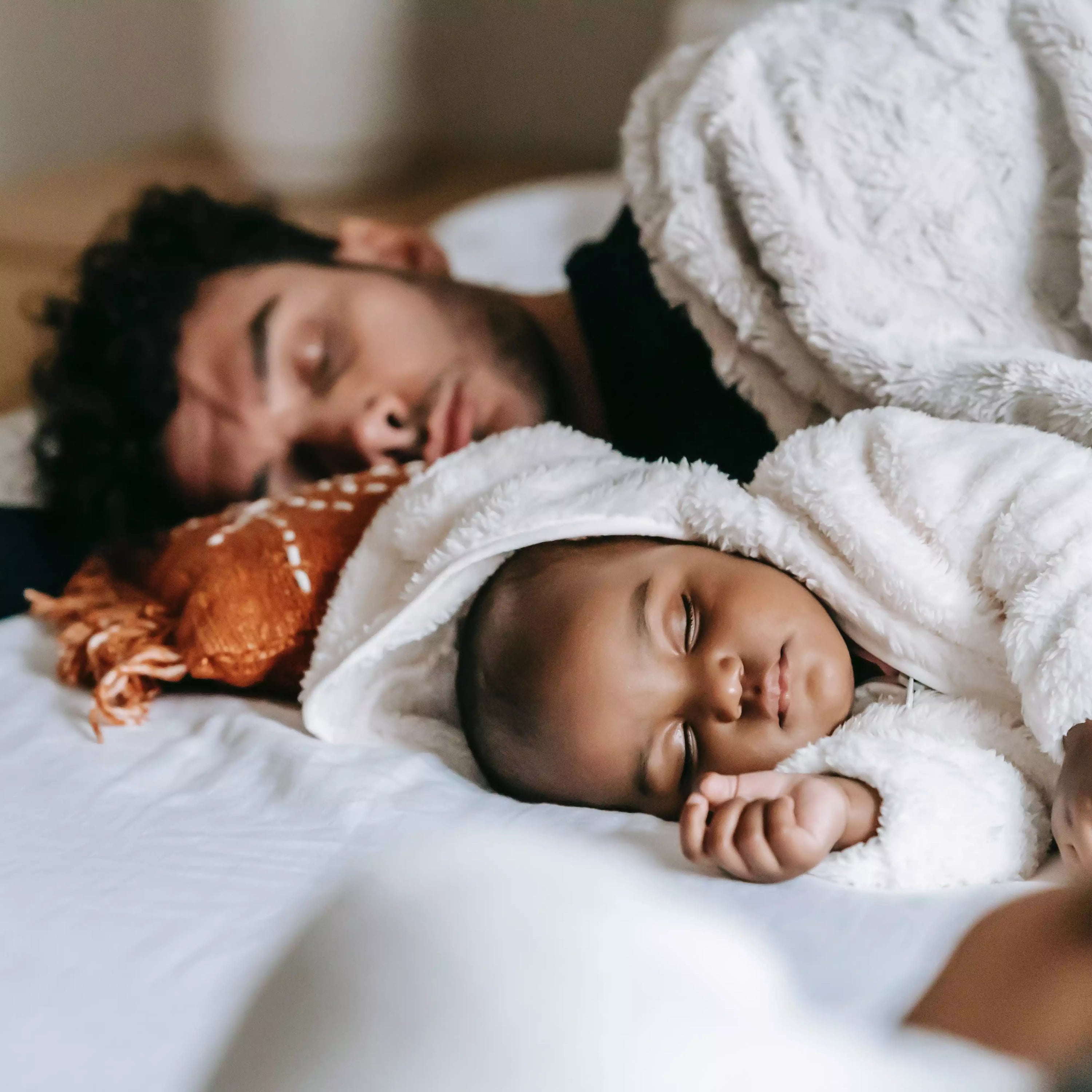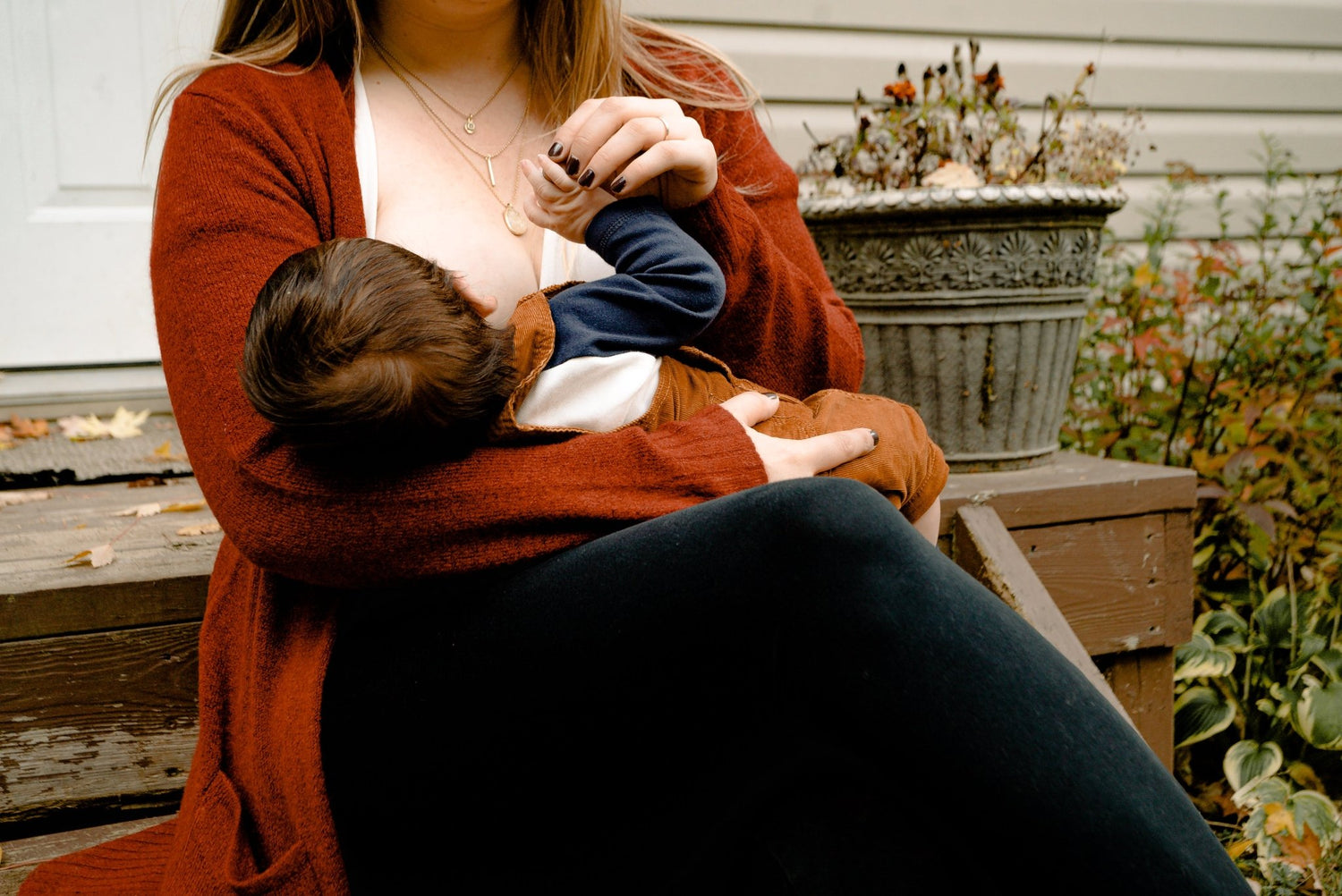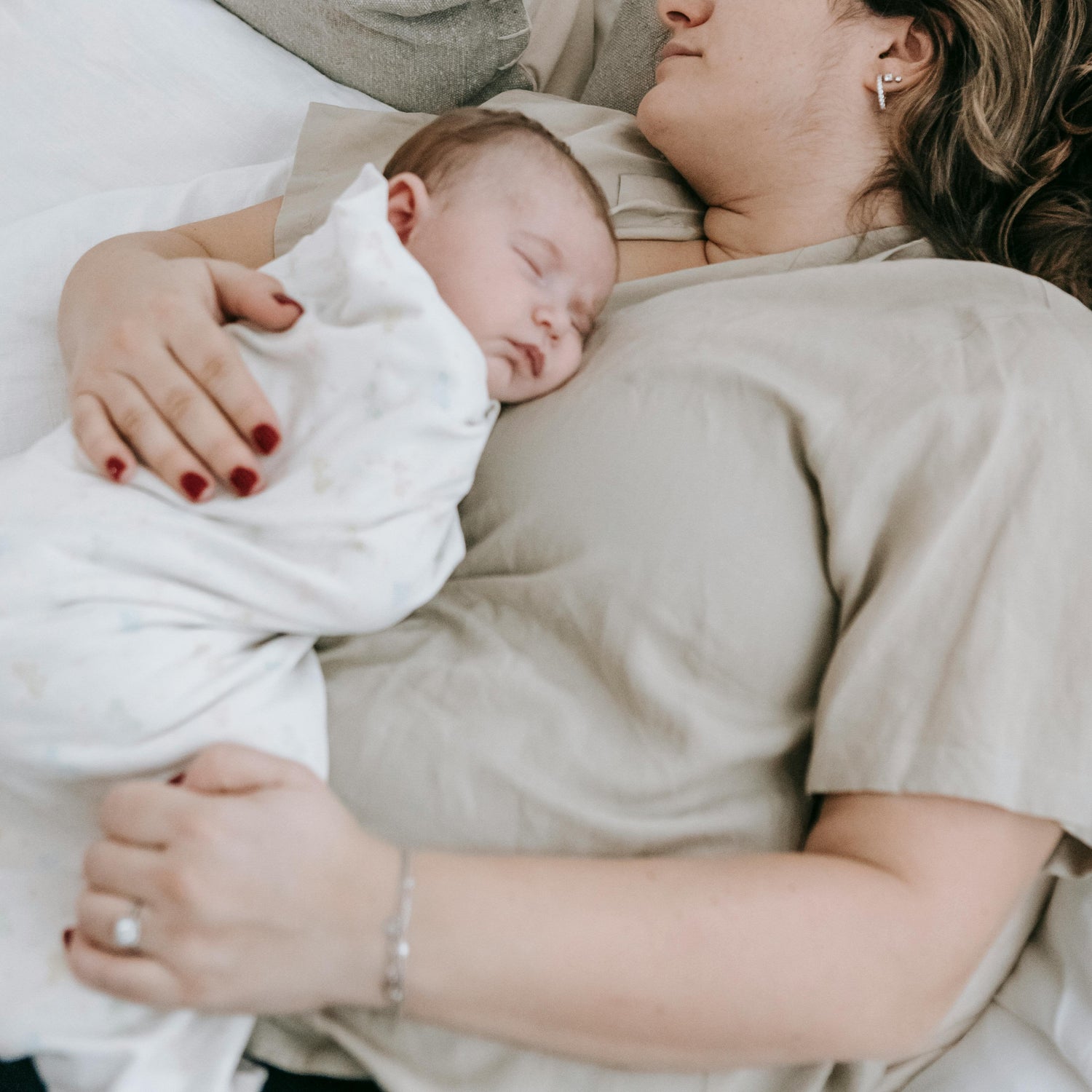Co-sleeping in the family bed: sleeping safely with your baby
The family bed – love it or hate it 😉 I really didn’t think I was the family bed type, but it completely convinced me! Because in the family bed next to their parents, children feel safe and can rest well. If your baby/child wakes up at night, you don't have to get up and you can get back to sleep more quickly. The good thing about it: In principle, any bed can become a family bed! Below I will show you the most important questions when it comes to co-sleeping in a family bed.
1. How much space do I need when co-sleeping?
Every person who sleeps in it (whether an adult, child or baby) should have a space of at least 90cm!
2. Which bed do I need when sleeping together in a family bed?
A bed close to the floor would be desirable so that the child cannot fall out and you don't have to worry about it, but can sleep relaxed.
3. How is the family bed safe?
In addition to the two previous questions, there are also a few “safety rules” that you should follow to ensure that the family bed is really safe:
- No people should sleep in the family bed if they smoke, have drunk alcohol, take medication that impairs consciousness or are under the influence of drugs.
- Make sure that your child cannot fall out of the bed (attach fall protection, etc.).
- Babies should not sleep directly next to siblings in the family bed (SIDS = sudden infant death syndrome)
- Falling asleep on the parent's body is okay, but the child should be put down before the parent falls asleep themselves.
- The baby should fall asleep lying on his back. Only when he is able to turn on his stomach should he sleep on his stomach.
- The baby should wear a sleeping bag, he does not need a blanket or pillow, the parents can each have their own blanket and pillow.
4. Is it equivalent to co-sleeping if the child is in the room but in an extra bed?
Nope! The child hears the mother's movements and breathing sounds, which reduces the risk of sudden infant death syndrome (SIDS), but it has to regulate its own body temperature and does not feel as safe as if it had physical contact with the mother feels.
5. What are the advantages of co-sleeping in a family bed?
Co-sleeping in a family bed has been proven to strengthen the parent-child bond. It promotes the baby's emotional and physical development, as the family bed offers the opportunity to sleep in close proximity to the parents. This gives the child security and security, which can have a positive effect on their development.
Another advantage is the physical proximity of the mother to the child, which enables her to respond more quickly to the child's needs and calm him down. This means nighttime breastfeeding can be done quickly and easily in the family bed. In addition, physical proximity promotes better sleep quality and structure for both parents and children by providing a feeling of security.
6. How long should I let my baby sleep in the parents' bed?
How long a baby sleeps in its parents' bed depends on various factors, including the individual preferences of the family and the needs of the child. Many parents let their baby sleep in the parents' bed for as long as it is comfortable and safe for all family members. Some children sleep in their parents' bed until they are a year old or even longer, while others may move into their own bed or sleeping environment earlier.
Guest article by Jasmin Eckert from Frau_Eckert_Meckert :
Instagram: frau_eckert_meckert
Website: www.fraueckertmeckert.de





